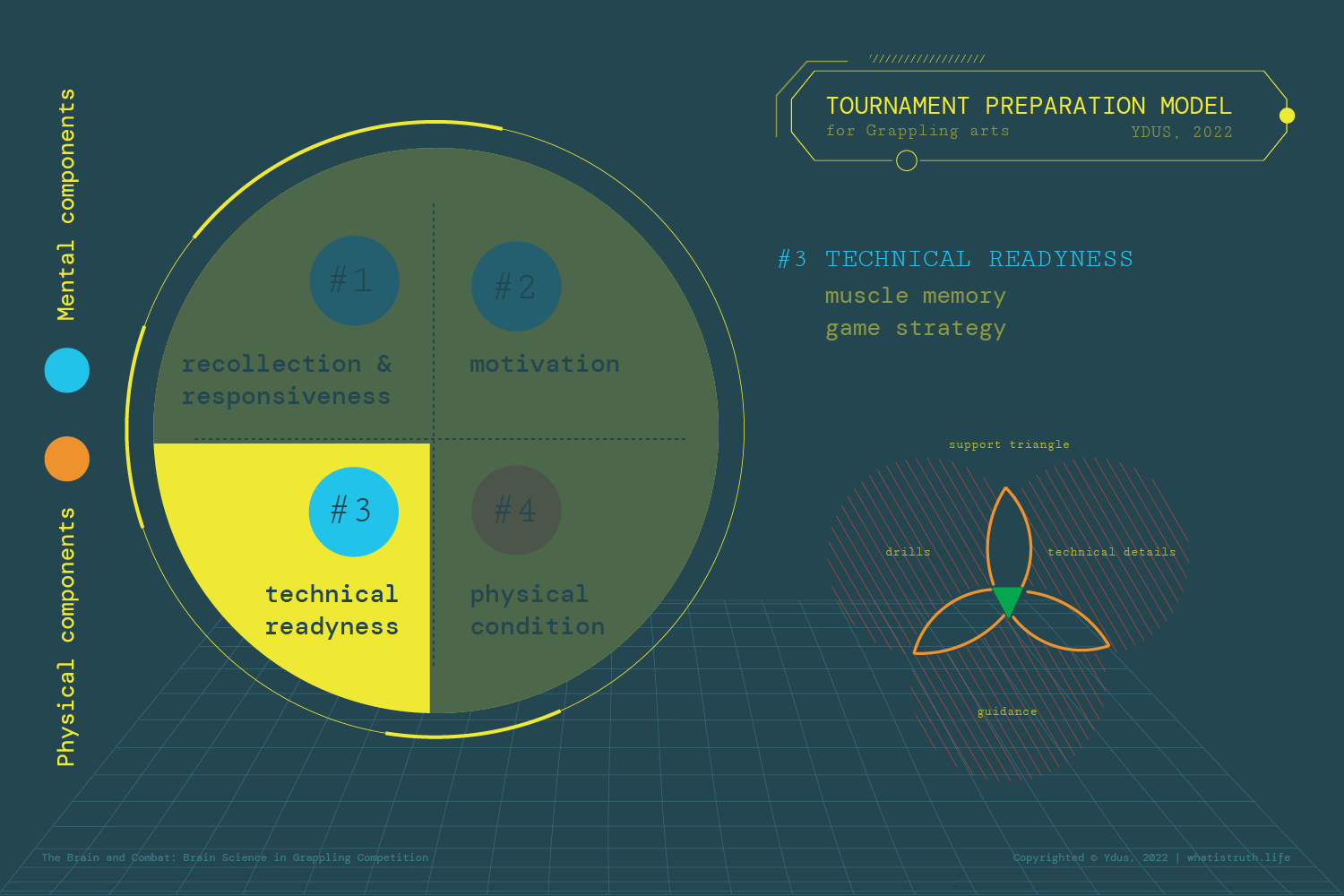Published in 2022, the WIT Tournament Preparation Model for Grappling Arts® is a mental training concept developed by counsellor Ydus that represents a human-centred approach for combat sport carrier development.
The model proposes four quadrants to describe the main components of tournament preparation. Three quadrants represent the mental components of winning, while the fourth quadrant belongs to the physical realm.
Demonstrating the immense dominance of the psychological domain in competition success.

This quadrant refers to the balancing effort between two contradictory forces—both of which are essential for great competition performance.
On one side, responsiveness requires a certain stress level to reach a fight-ready condition, providing the athlete with the necessary heightened senses, fast reflexes, and ideal muscle condition.
On the other side, recollection of techniques and game strategy requires a settled mind with as little stress as possible.
These two conflicting requirements create a narrow window where both of them are functional—staying in this zone is at the core of competition success.

Motivation involves a mix of past and present lessons about the one’s potentials and abilities, dynamically shaping their natural drive.
Motivation defines how much resources a person is willing or able to mobilise in order to fight effectively.
Accordingly, mitigating the unsupportive components of past and present influences is crucial to achieving the desired competition outcome.

Technical readiness includes forming the necessary muscle memory and creating a personalised game plan and competition strategy.
This quadrant shows overlap with physical preparation but dominantly related to mental processes.
The approach and the necessary support for effective training are discussed in the modules, however, the responsibility for providing the appropriate curriculum and peer support falls under the responsibility of the school and its trainers.

The fourth component of the tournament preparation model is physical condition. This is the most well-known and researched area and is often incorrectly associated with competition performance.
Although it is essential, it is only one of the four components that define the outcome, as the physical needs of a competition are very similar to those of regular sparring.
References to the relevant research papers are discussed on our website; however, a detailed physical conditioning program is currently beyond the scope of our services.
Gain a unique set of skills that sets you apart from self-proclaimed combat trainers. The program’s distinct curriculum, based on evidence-based academic material, will make you one of the most effective and respected combat coaches in the field.



